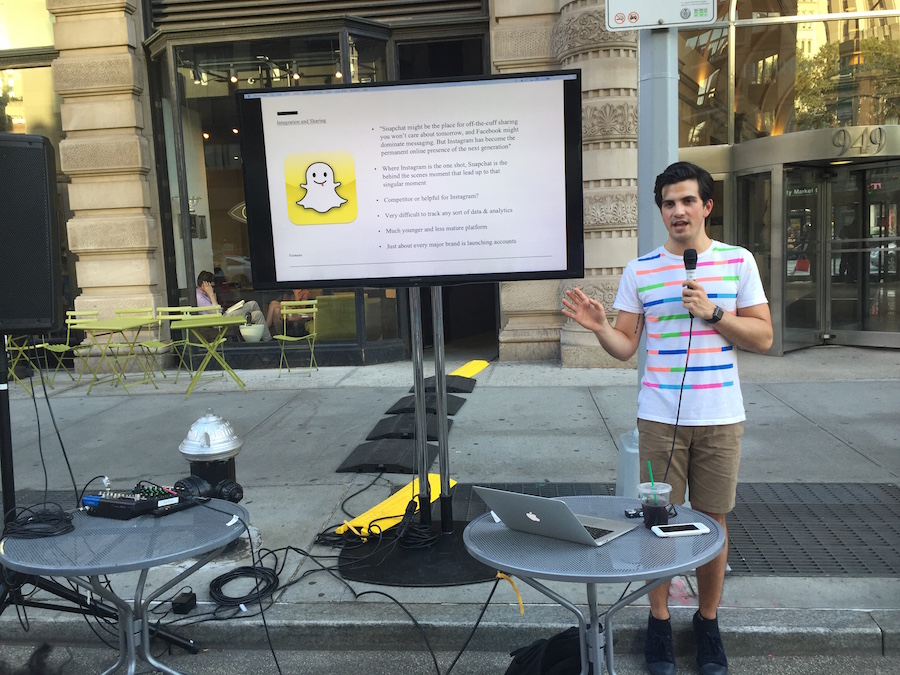The cityscapes, exotic nature photos and other beautiful travel pictures that are popular on Instagram come from accounts like @noyourcity, which is curated by Greg Jacobs, a self-described dog lover and travel devotee.
The account boasts 23.2K followers, thanks to Jacobs’ eye for content and Instagram-marketing expertise.
Jacobs hosted the “Picture This: Instagram for Business” class in conjunction with General Assembly in the Flatiron recently, where aspiring entrepreneurs, established photographers, and business owners gathered for advice about social media marketing, specifically on Instagram.
According to Jacobs, the power of Instagram is greater than that of any other social media platform, as humans are inherently visual.
“The human mind can process images 100 times faster than they can process a letter,” he said.
Jacobs discussed where he finds inspiration for @noyourcity and the history of Instagram, along with tips on how to improve Instagram posts and generate audience involvement.
Every day, Jacobs said he consults sites like TechCrunch, Mashable, Facebook and the Wall Street Journal to keep up with current events in the travel and business industries.
He recommends every businessperson consume daily news from outlets relevant to his or her brand.
While @noyourcity aggregates its content and essentially began on social media, Jacobs said that Instagram is not necessary for every brand—just those who can effectively use images to communicate with the consumer.
Since customers are able to comment on photos and receive direct replies, it is a great platform for company feedback, Jacobs explained.
“Instagram is such a friendly community. If you’re engaging with brands, they’re going to engage with you,” he said.
Now, for brands to engage consumers, they must provide aesthetically appealing visuals.
Jacobs said that today, successful companies post photos that relate to the consumer’s lifestyle. This helps a brand stand out, while still attracting their target audience.
Also, all companies have the potential to post quality photos, as today’s smartphones can even produce professional-looking pictures, Jacobs said.
He recommends taking a basic photography course to learn the foundations, like the rule of two-thirds, focus, and lighting.
Jacobs also noted that filters are becoming increasingly obsolete today. His brand refrains from using filtered photos to project a more natural, less contrived look.
Companies who do use filters should be careful, Jacobs said. Using the same filter on every photo is best, as it will help project a consistent brand image.
Also, photo editing is important, but you don’t have to be a professional, Jacobs said. While advanced photographers rely on PhotoShop, there are more simple apps such as Snapseed and VSCOCAM that will do the work for you.
Another important aspect—that unsuccessful Instagram accounts fall flat on—is the time and date of posting.
You want to post your business’ photos at a time when people are on Instagram, but also not when everyone else is posting, or your photos will get lost in the feed, Jacobs said.
According to Jacobs, 5 p.m. Eastern is the most common time people are on Instagram, while 4-8 p.m. Eastern is the best time to post.
Brands should also focus on how often they post, Jacobs said. Customers will lose interest if companies don’t post at least once a day.
Creating an effective business Instagram account requires research, an aesthetic eye, timeliness, audience involvement and consistency. Follow these steps and your business will flourish.




